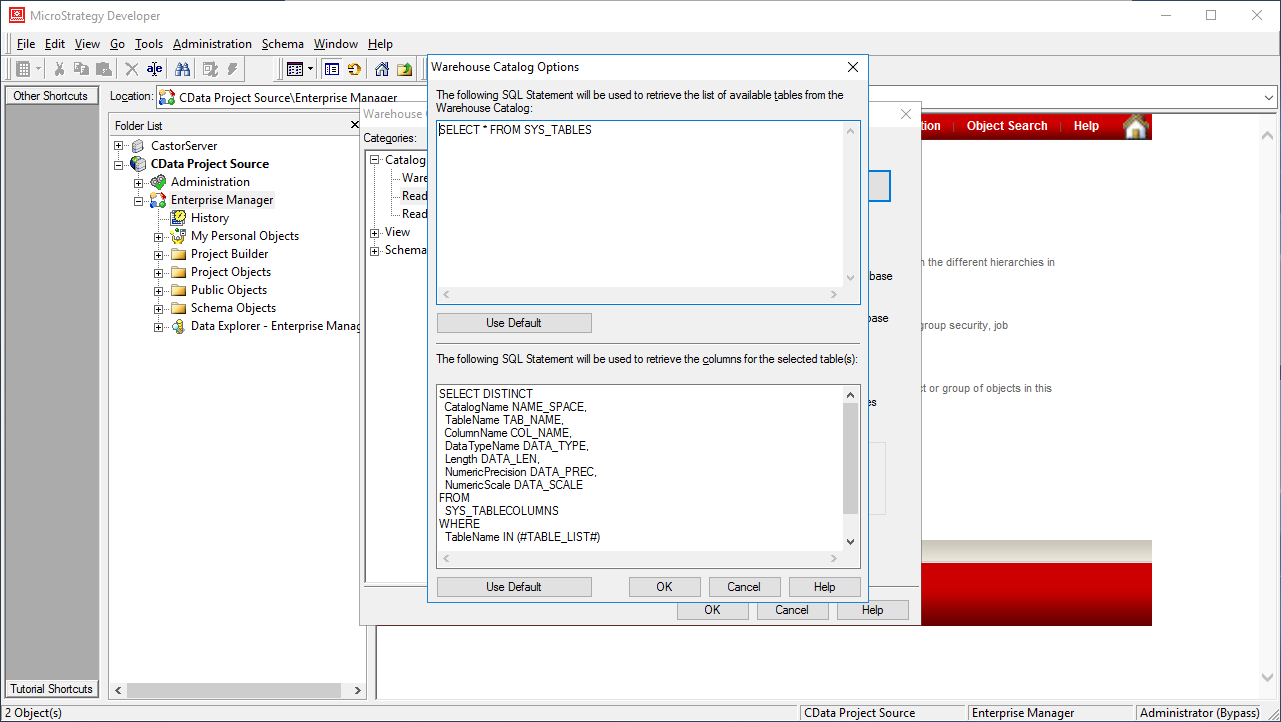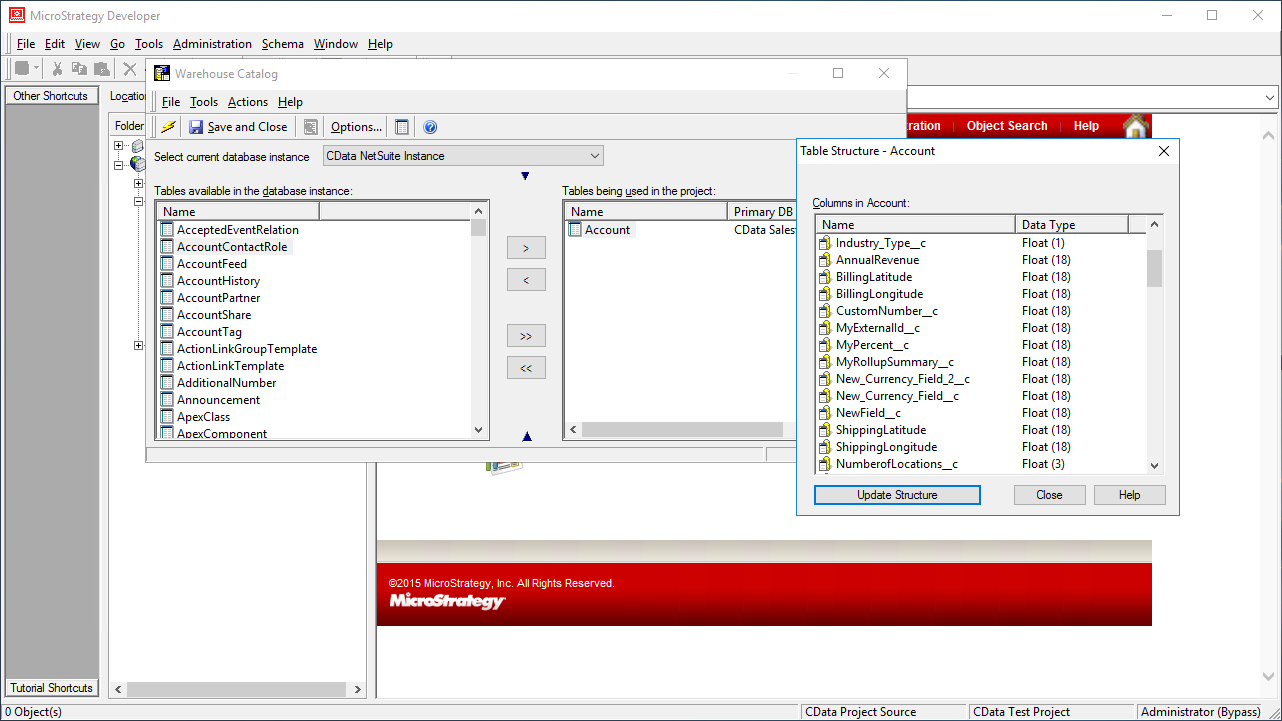Discover how a bimodal integration strategy can address the major data management challenges facing your organization today.
Get the Report →Use the CData ODBC Driver for WooCommerce in MicroStrategy
Connect to WooCommerce data in MicroStrategy Developer using the CData ODBC Driver for WooCommerce.
MicroStrategy is an analytics and mobility platform that enables data-driven innovation. When you pair MicroStrategy with the CData ODBC Driver for WooCommerce, you gain database-like access to live WooCommerce data from MicroStrategy, expanding your reporting and analytics capabilities. In this article, we walk through creating a database instance for WooCommerce in MicroStrategy Developer and creating a Warehouse Catalog based on WooCommerce data.
The CData ODBC Driver offers unmatched performance for interacting with live WooCommerce data in MicroStrategy due to optimized data processing built into the driver. When you issue complex SQL queries from MicroStrategy to WooCommerce, the driver pushes supported SQL operations, like filters and aggregations, directly to WooCommerce and utilizes the embedded SQL engine to process unsupported operations (often SQL functions and JOIN operations) client-side. With built-in dynamic metadata querying, you can visualize and analyze WooCommerce data using native MicroStrategy data types.
Connect to WooCommerce as an ODBC Data Source
Information for connecting to WooCommerce follows, along with different instructions for configuring a DSN in Windows and Linux environments (the ODBC Driver for WooCommerce must be installed on the machine hosting the connected MicroStrategy Intelligence Server).
WooCommerce supports the following authentication methods: one-legged OAuth1.0 Authentication and standard OAuth2.0 Authentication.
Connecting using one-legged OAuth 1.0 Authentication
Specify the following properties (NOTE: the below credentials are generated from WooCommerce settings page and should not be confused with the credentials generated by using WordPress OAuth2.0 plugin):
- ConsumerKey
- ConsumerSecret
Connecting using WordPress OAuth 2.0 Authentication
After having configured the plugin, you may connect to WooCommerce by providing the following connection properties:
In either case, you will need to set the Url property to the URL of the WooCommerce instance.
When you configure the DSN, you may also want to set the Max Rows connection property. This will limit the number of rows returned, which is especially helpful for improving performance when designing reports and visualizations.
If you have not already, first specify connection properties in an ODBC DSN (data source name). This is the last step of the driver installation. You can use the Microsoft ODBC Data Source Administrator to create and configure ODBC DSNs.
If you are installing the CData ODBC Driver for WooCommerce in a Linux environment, the driver installation predefines a system DSN. You can modify the DSN by editing the system data sources file (/etc/odbc.ini) and defining the required connection properties.
For specific information on using these configuration files, please refer to the help documentation (installed and found online).
You can connect to WooCommerce in MicroStrategy Developer by adding a database instance based on the CData ODBC Driver for WooCommerce.*
With the database instance configured, you will now be able to connect to WooCommerce data from the Warehouse Catalog and Data Import.
Once you have created a database instance based on the ODBC Driver for WooCommerce, you can connect to data from the Warehouse Catalog. If you are interested in connecting to WooCommerce from other MicroStrategy products, you can read about connecting from MicroStrategy Web and connecting from MicroStrategy Desktop. Note: connecting using a ODBC driver requires a 3- or 4-tier architecture.
Windows
Linux
/etc/odbc.ini
[CData WooCommerce Sys]
Driver = CData ODBC Driver for WooCommerce
Description = My Description
Url = https://example.com/
ConsumerKey = ck_ec52c76185c088ecaa3145287c8acba55a6f59ad
ConsumerSecret = cs_9fde14bf57126156701a7563fc87575713c355e5
Create a WooCommerce Database Instance in MicroStrategy Developer
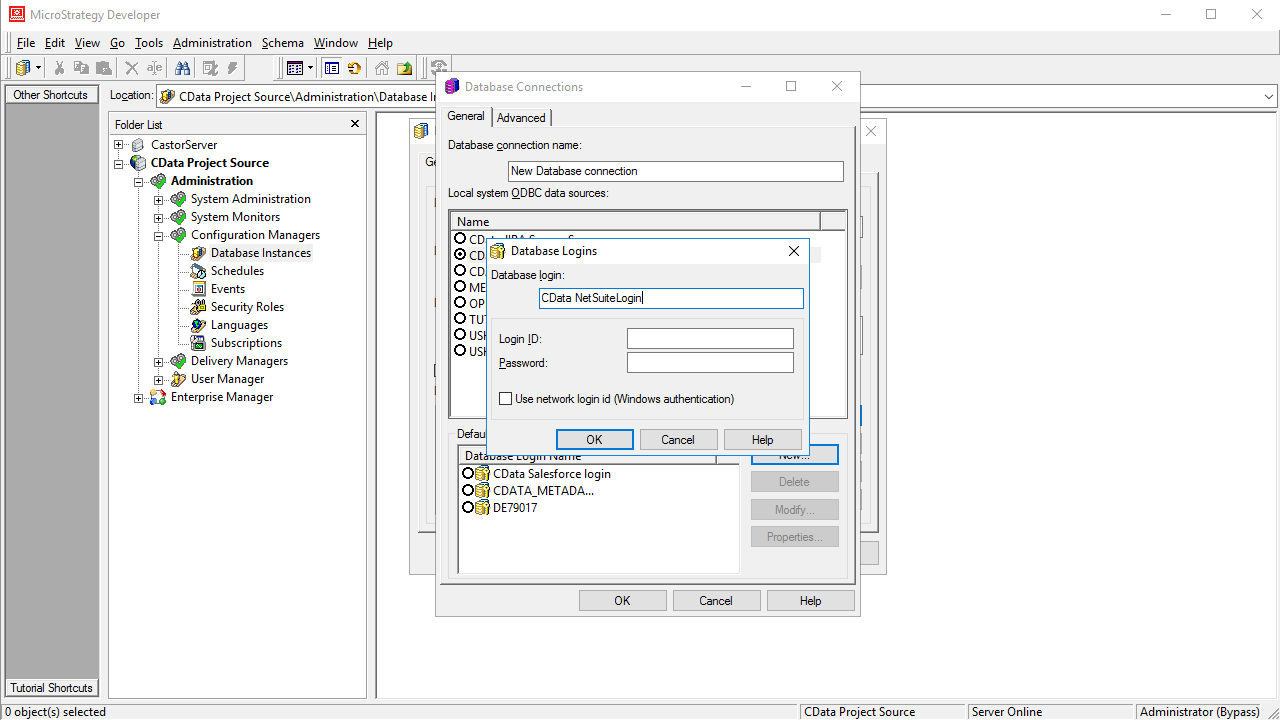
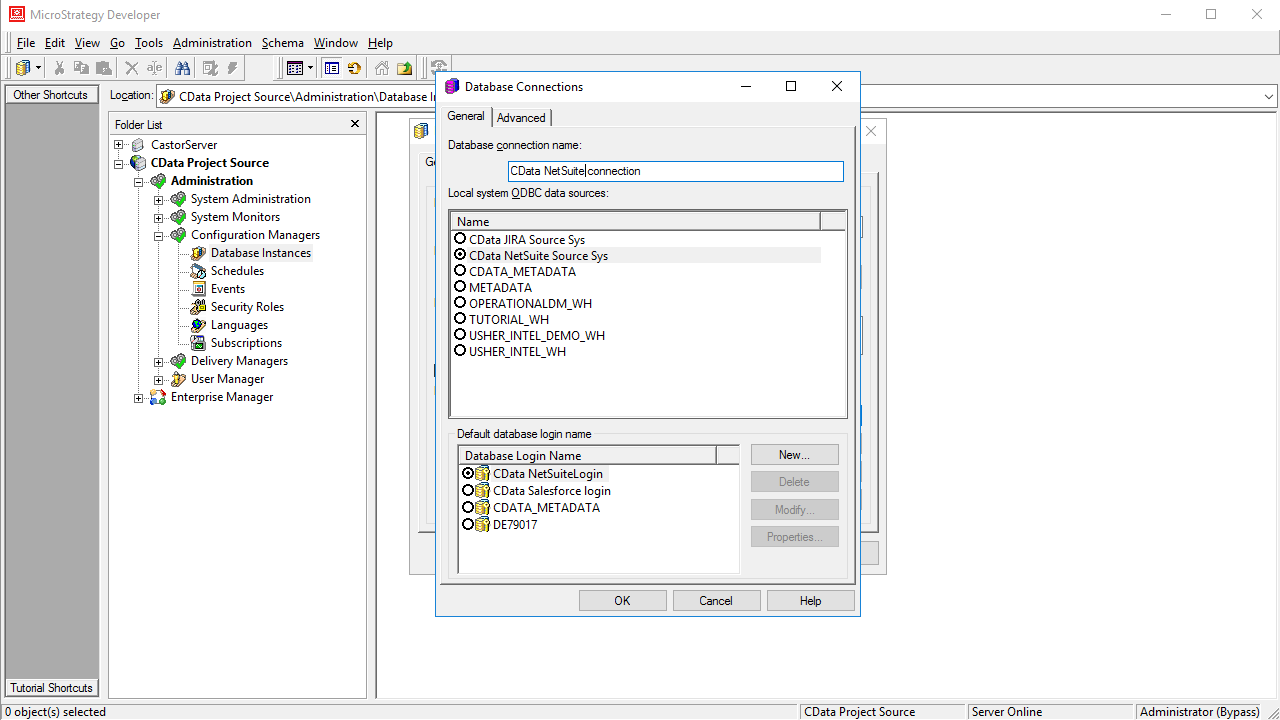
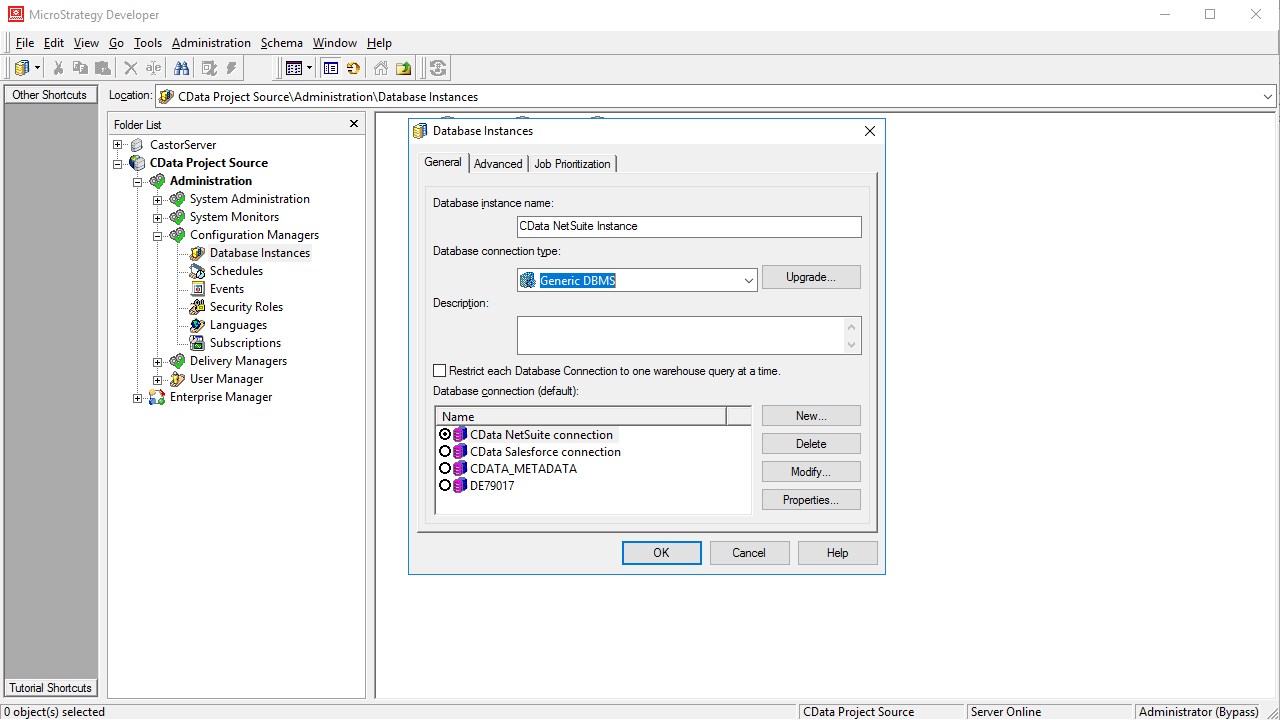
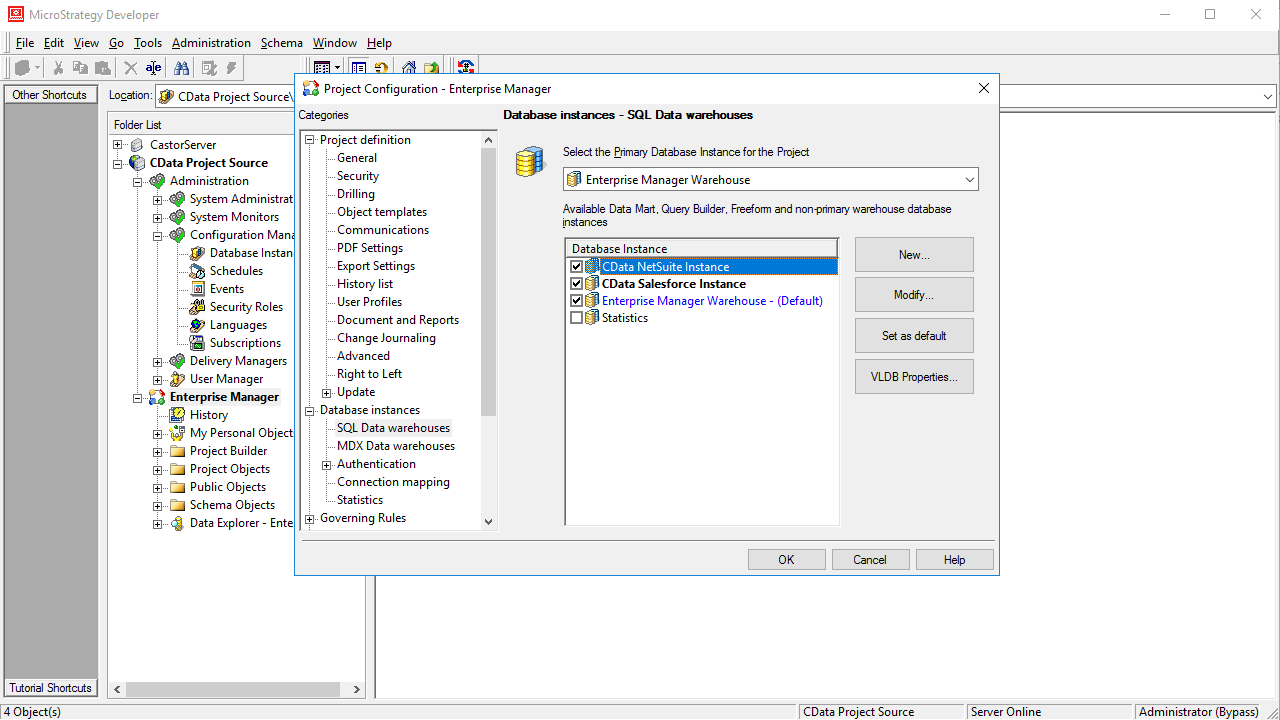
Connect to WooCommerce Data from the Warehouse Catalog
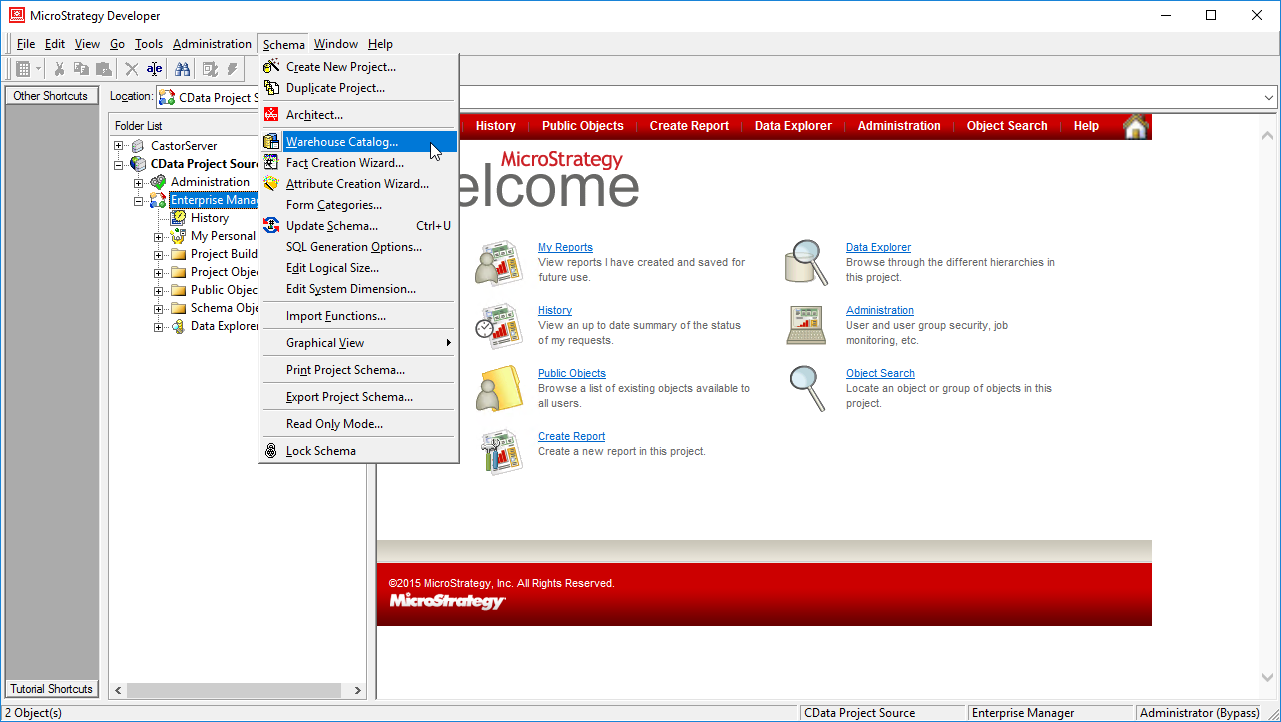
SELECT
CatalogName NAME_SPACE,
TableName TAB_NAME
FROM
SYS_TABLES
SELECT DISTINCT
CatalogName NAME_SPACE,
TableName TAB_NAME,
ColumnName COL_NAME,
DataTypeName DATA_TYPE,
Length DATA_LEN,
NumericPrecision DATA_PREC,
NumericScale DATA_SCALE
FROM
SYS_TABLECOLUMNS
WHERE
TableName IN (#TABLE_LIST#)
ORDER BY
1,2,3
